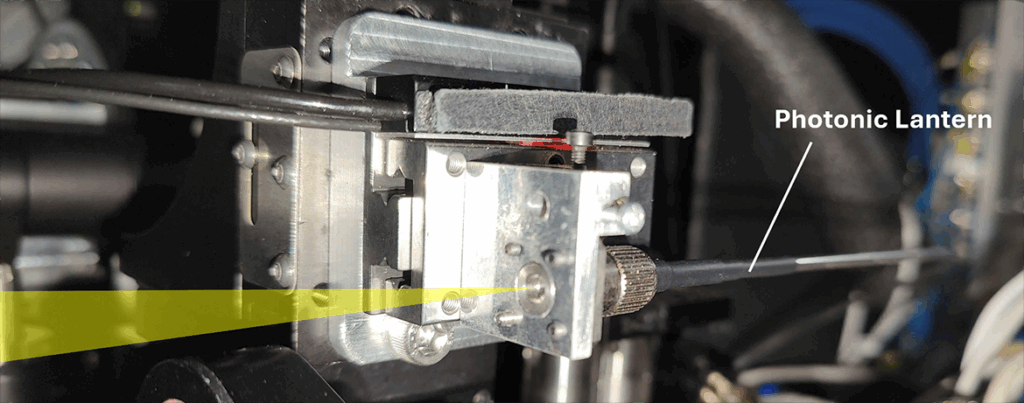
A groundbreaking imaging technique, applied for the first time on a ground-based telescope, has enabled a UCLA-led team of astronomers to achieve the sharpest-ever measurement of a star’s surrounding disk. This innovation unveils previously unseen structures and opens new avenues for astronomical research, potentially leading to significant discoveries about the universe.
The ability to capture fine details of astronomical objects is traditionally linked to the size of the telescope. Larger telescopes collect more light, allowing them to reveal fainter objects and produce sharper images. Historically, the sharpest images have been obtained by linking telescopes into arrays. However, this new technique, utilizing a “photonic lantern,” allows for high-resolution imaging with a single telescope.
Revolutionary Imaging Technique
Details of this achievement have been published in the journal Astrophysical Journal Letters. Yoo Jung Kim, the first author and a UCLA doctoral candidate, explained the process: “In astronomy, the sharpest image details are usually obtained by linking telescopes together. But we did it with a single telescope by feeding its light into a specially designed optical fiber, called a photonic lantern. This device splits the starlight according to its patterns of fluctuation, keeping subtle details that are otherwise lost. By reassembling the measurements of the outputs, we could reconstruct a very high-resolution image of a disk around a nearby star.”
The photonic lantern splits the light collected by the telescope into multiple channels based on the wavefront’s shape, similar to separating a chord into its individual musical notes, and further splits it by color, akin to a rainbow. This instrument, part of the new FIRST-PL instrument, was developed by the Paris Observatory and the University of Hawaiʻi, and integrated on the Subaru Telescope in Hawaiʻi.
Global Collaboration and Technological Innovation
Sebastien Vievard, a faculty member in the Space Science and Engineering Initiative at the University of Hawaiʻi, remarked, “What excites me most is that this instrument blends cutting-edge photonics with the precision engineering done here in Hawaiʻi. It shows how collaboration across the world, and across disciplines, can literally change the way we see the cosmos.”
This approach allows astronomers to achieve a finer resolution than traditional imaging methods. UCLA professor of physics and astronomy Michael Fitzgerald noted, “For any telescope of a given size, the wave nature of light limits the fineness of the detail that you can observe with traditional imaging cameras. This is called the diffraction limit, and our team has been working to use a photonic lantern to advance what is achievable at this frontier.”
Overcoming Atmospheric Challenges
The application of this new method initially faced challenges due to atmospheric turbulence, akin to the wavy appearance of the horizon on a hot day. To mitigate these effects, the team employed adaptive optics at the Subaru Telescope, which continuously adjusted to stabilize the light waves in real time. Kim explained, “We need a very stable environment to measure and recover spatial information using this fiber. Even with adaptive optics, the photonic lantern was so sensitive to the wavefront fluctuations that I had to develop a new data processing technique to filter out the remaining atmospheric turbulence.”
Discoveries and Implications
The team used the photonic lantern-equipped Subaru Telescope to observe the star beta Canis Minoris (β CMi), located approximately 162 light-years from Earth. This star’s surrounding disc, composed of hydrogen, rotates rapidly, causing a color shift due to the Doppler effect. By applying new computational techniques, the team measured these shifts with unprecedented precision, discovering an unexpected asymmetry in the disc.
“We were not expecting to detect an asymmetry like this, and it will be a task for the astrophysicists modeling these systems to explain its presence,” said Kim.
This innovative approach to imaging will allow astronomers to explore details of smaller and more distant objects than ever before, potentially unlocking answers to longstanding cosmic mysteries and introducing new ones.
Future Prospects and Continued Research
The international effort included researchers from institutions such as the University of Hawaiʻi, the National Astronomical Observatory of Japan, the California Institute of Technology, and others. Nemanja Jovanovic, a co-leader of the study at Caltech, emphasized the potential of this technology, stating, “This work demonstrates the potential of photonic technologies to enable new kinds of measurement in astronomy. We are just getting started. The possibilities are truly exciting.”
As the astronomical community continues to refine and expand upon these techniques, the potential for new discoveries looms large. The ability to view the universe with unprecedented clarity could lead to breakthroughs in our understanding of cosmic phenomena, offering a sharper view into the mysteries that lie beyond our current reach.





